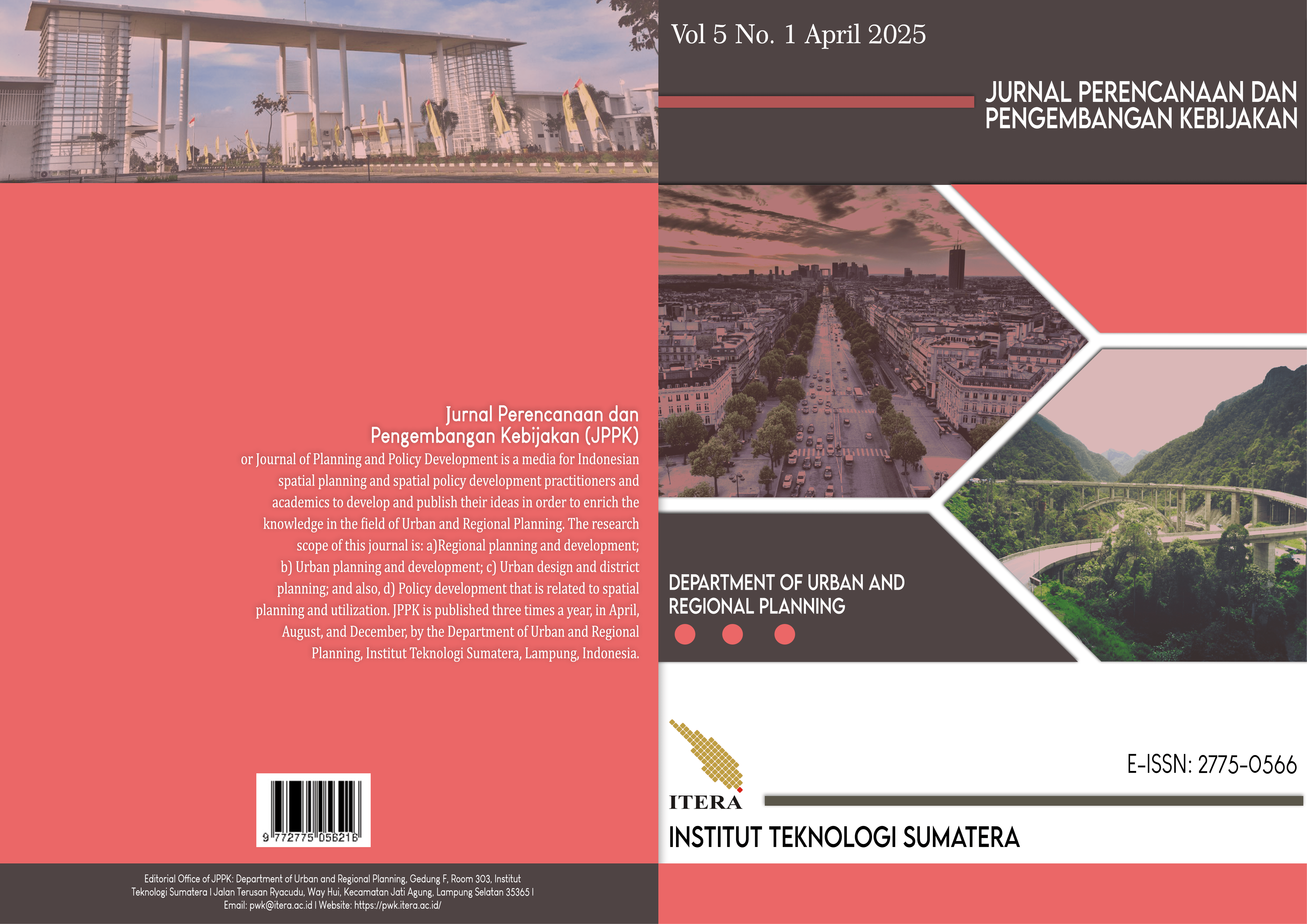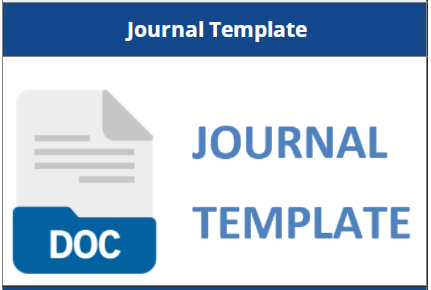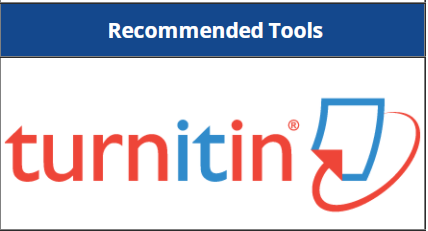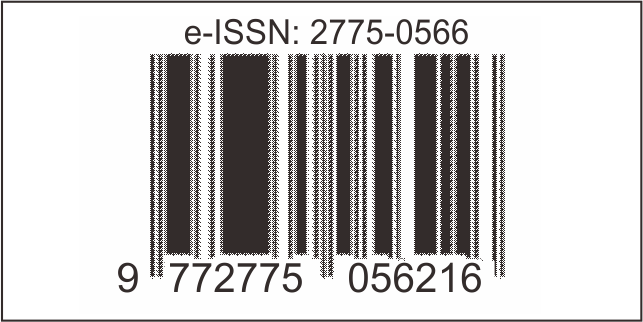Kesesuaian Lahan Kawasan Permukiman Berdasarkan Kemampuan Lahan BWK II Kota Semarang
Abstract
Limited land followed by high population growth and urban development will be a problem for many sectors, especially the environmental aspect. Thus, urban development must be directed. The development of a good residential area is one that is in accordance with the development area. BWK II Semarang City is predicted to experience growth in 2031 up to 24.41%, even though the majority of land use is in the form of residential areas. The development of BWK II which tends to be rapid and followed by population growth is feared to increase the need for settlements. Land capability is considered to be one method to analyze which areas can still be developed. The purpose of this study is to determine the suitability of land capability in the BWK II residential area of Semarang City. This study uses a quantitative research method with a spatial approach. The settlement area was analyzed by land capability using 9 Land Capability Units (LCAP) which include: Morphological LCAP, Workability LCAP, Slope Stability LCAP, Foundation Stability LCAP, Water Availability LCAP, Erosion LCAP, Drainage LCAP, Waste Disposal LCAP, and Natural Disaster LCAP. The results of the land capability were overlaid with the settlement area. The results showed that 97% of the settlement area was still in accordance with the development area and 3% of the settlement area in BWK II was not in accordance with the development area, including in parts of Karanganyar Gunung Village, Bendan Ngisor Village, and Gajah Mungkur Village.
Downloads
References
[2] Benjamin, S. (2004). Urban land transformation for pro-poor economies. Geoforum, 35(2), 177─187.
[3] Fitriansyah, H., & Fajrin Ibrahim, M. (2020). Pengembangan Kawasan Teknopolis Gedebage Kota Bandung Berdasarkan Analisis Daya Dukung Lahan. Plano Madani, 9(2), 57–67. Retrieved from http://journal.uin-alauddin.ac.id/index.php/planomadani
[4] Kustiwan, I., & Ladimananda, A. (2012). Pemodelan Dinamika Perkembangan Perkotaan dan Daya Dukung Lahan di Kawasan Cekungan Bandung. TATALOKA, 14(2), 98–112. https://doi.org/10.14710/tataloka/14.2.98-112
[5] Mubarok, R., Widyasamratri, H., & Pakarti Budi, S. (2022). Analisis Perubahan Lahan Studi Kasus : Kecamatan Mijen Kota Semarang, Kota Malang, dan Bali. Jurnal Kajian Ruang, 2(2), 204–214. Retrieved from http://jurnal.unissula.ac.id/index.php/kr
[6] Oh, K., Jeong, Y., Lee, D., & Lee, W. (2004). Determining Sustainable Development Density using the Urban Carrying Capacity Assessment System. Retrieved from http://www.casa.ucl.ac.uk/working_papers/paper78.pdf
[7] Pemerintah Provinsi Jawa Tengah. (2021). Peraturan Daerah Kota Semarang Nomor 5 Tahun 2021 tentang Perubahan Atas Peraturan Daerah Nomor 14 Tahun 2011 Tentang Rencana Tata Ruang Wilayah Kota Semarang Tahun 2011─2031.
[8] Pemerintah Republik Indonesia. (2007). Peraturan Menteri Pekerjaan Umum 41/PRT/M/2007 tentang Pedoman Kriteria Teknis Kawasan Budi Daya.
[9] Pigawati, B., Sugiri, A., Putra, I. N. A. M., & Suryani, T. A. (2020). Prediction and location suitability of settlement growth at the BWK II of Semarang City. IOP Conference Series: Earth and Environmental Science, 500(1). Institute of Physics Publishing. https://doi.org/10.1088/1755-1315/500/1/012023
[10] Putra, R. W. S., & Pigawati, B. (2021). Tipologi Permukiman Kawasan Pesisir Kecamatan Semarang Utara (Vol. 18).
[11] Rahma, A., Abi Suroso, D., & Setianingrum, L. (2023). Motivasi Masyarakat Bermukim Di Kawasan Rawan Bencana Banjir. Jurnal Perencanaan Dan Pengembangan Kebijakan, 3(1), 1─13.
[12] Ramadhan, A., & Mazhi, K. Z. (2022). Kajian Daya Dukung Lahan Perkotaan dalam Rangka Optimalisasi Penataan Ruang Kota Bandung. Journal of Regional and Rural Development Planning, 6(3), 212–232. https://doi.org/10.29244/jp2wd.2022.6.3.212-232
[13] Setyawan, I. A., & Pigawati, B. (2018). Dampak Pembangunan Perumahan Graha Candi Golf di Kota Semarang. Teknik PWK, 7(3), 143–152. Retrieved from http://ejournal3.undip.ac.id/index.php/pwk
[14] Smets, P. & Van Lindert, P. (2016) Sustainable housing and the urban poor, International Journal of Urban Sustainable Development, 8:1, 1─9, DOI: https://doi.org/10.1080/19463138.2016.1168825
[15] Sukwika, T., & Firmansyah, I. (2021). Alokasi Pemanfaatan Ruang Berdasarkan Daya Dukung Lahan di Sawangan, Depok. Majalah Ilmiah Globe, 23(1), 13. https://doi.org/10.24895/MIG.2021.23-1.1049
[16] UN-Habitat. (2021). Housing and the Sustainable Development Goals: The transformational impact of housing.
[17] United Nations. (2018). Tracking Progress Towards Inclusive, Safe, Resilient and Sustainable Cities and Human Settlements.
[18] Wei, Y., Huang, C., Lam, P. T., & Yuan, Z. (2015). Sustainable urban development: A review on urban carrying capacity assessment. Habitat International, 46, 64─71.
[19] Widodo, B., Lupyanto, R., Sulistiono, B., Harjito, D. A., Hamidin, J., Hapsari, E., … Ellinda, C. (2015). Analysis of Environmental Carrying Capacity for the Development of Sustainable Settlement in Yogyakarta Urban Area. Procedia Environmental Sciences, 28, 519–527. https://doi.org/10.1016/j.proenv.2015.07.062
[20] Wilonoyudho, S. (2011). Determinan dan Dampak Urbanisasi Berlebih di Kota Semarang. Doctoral dissertation, Universitas Gadjah Mada.












